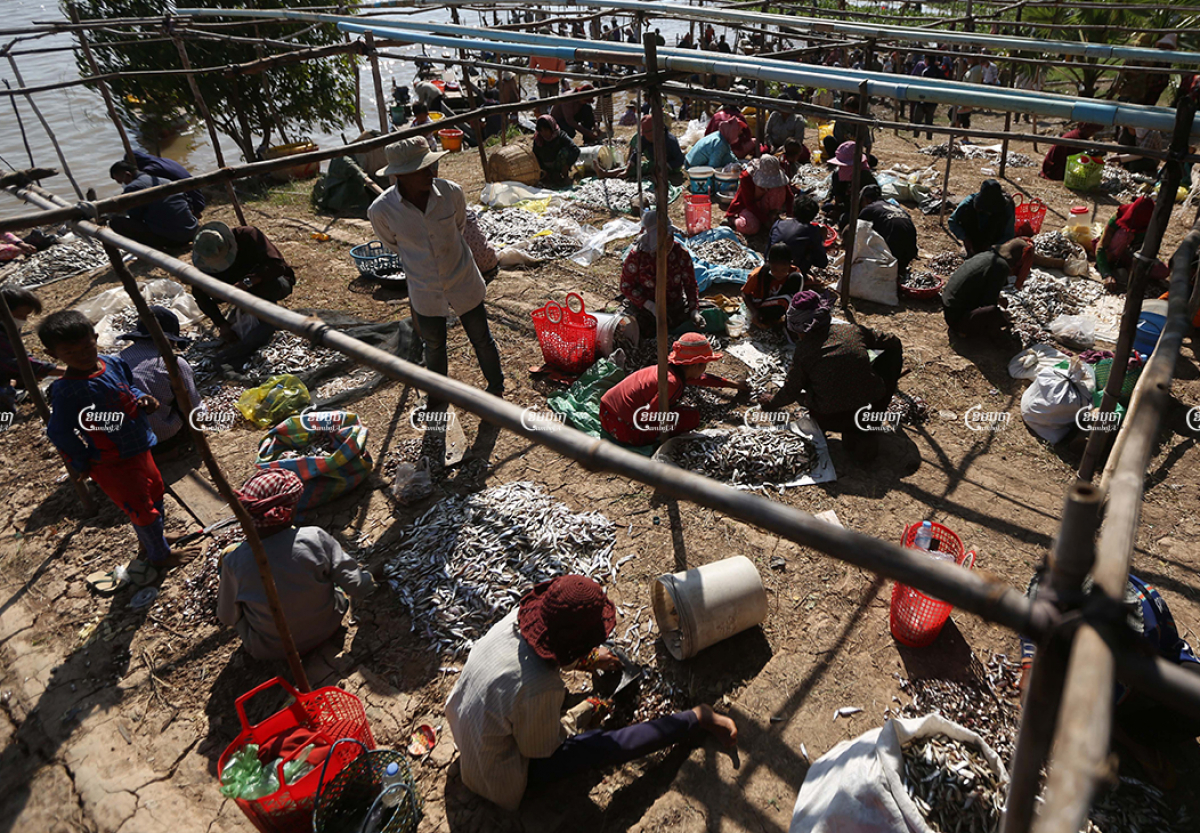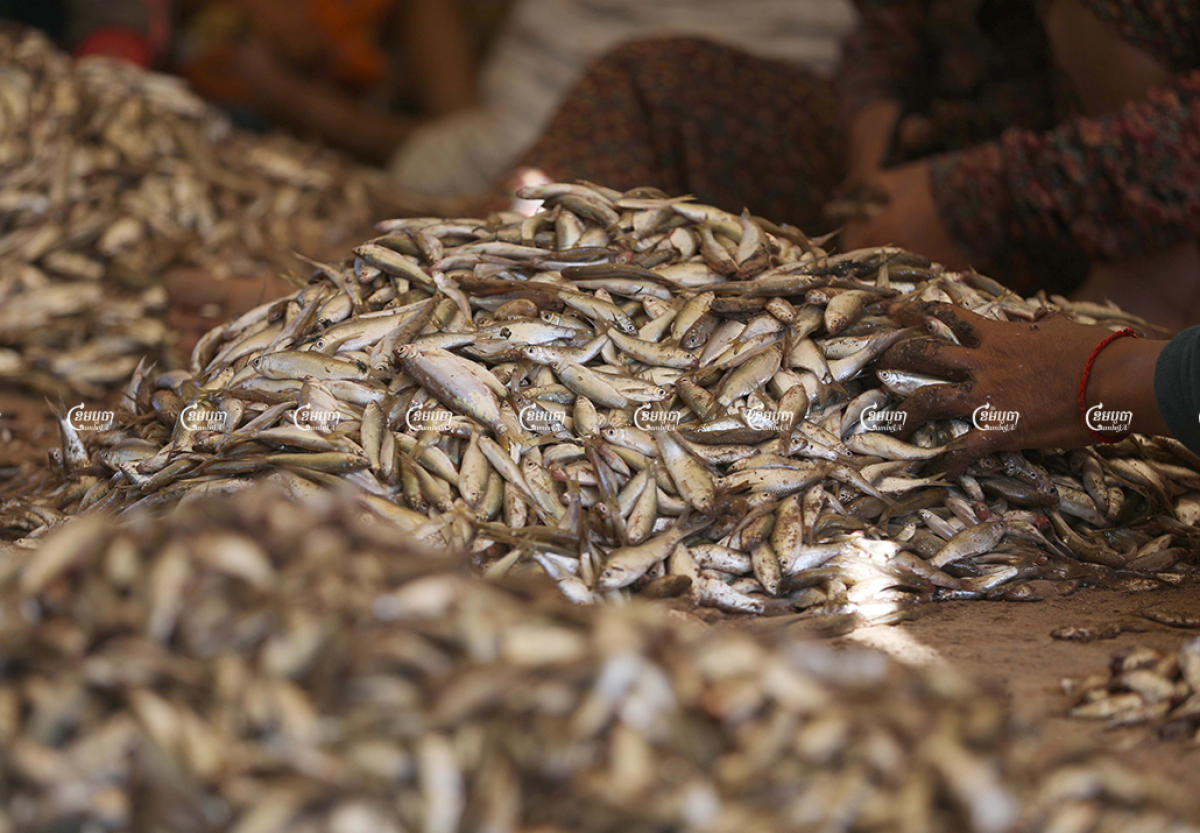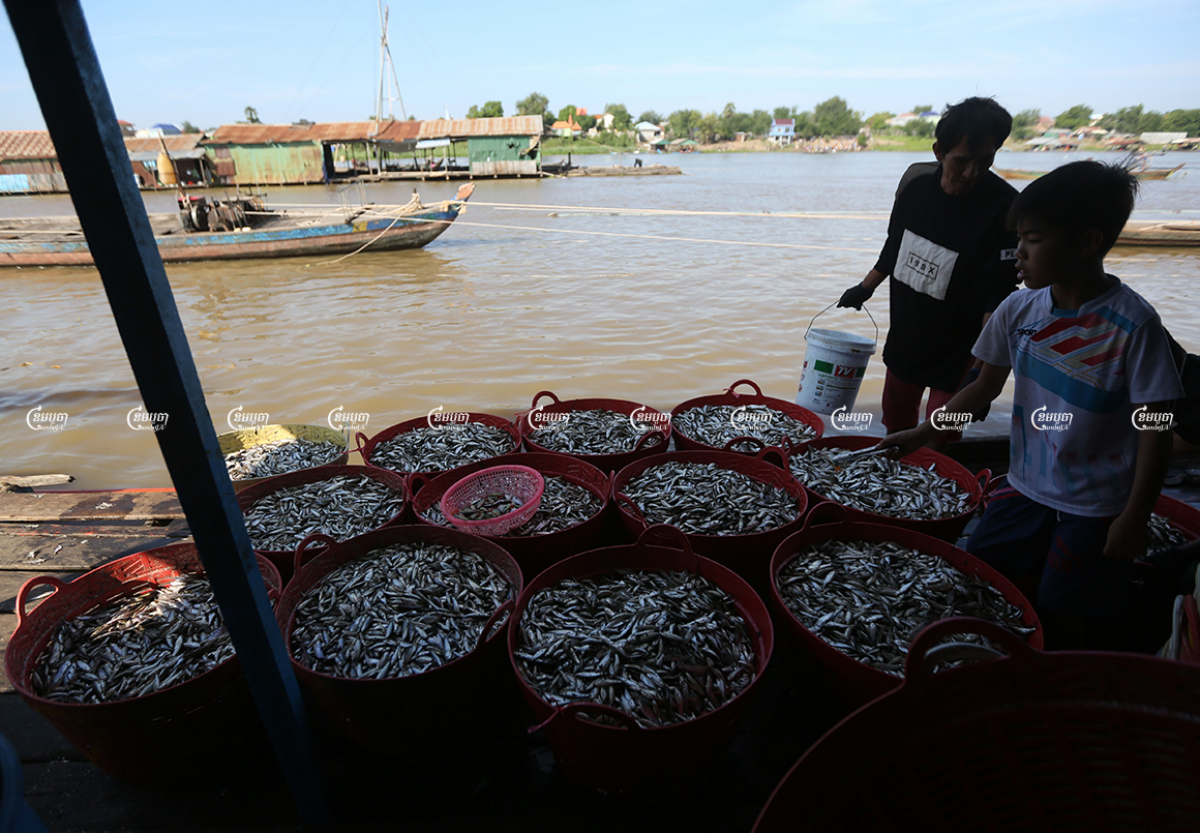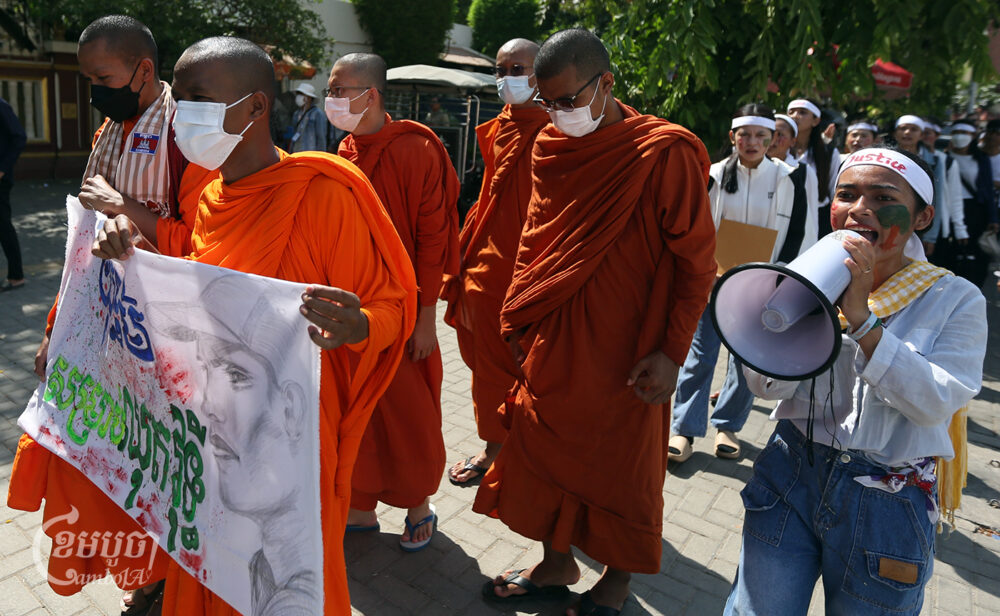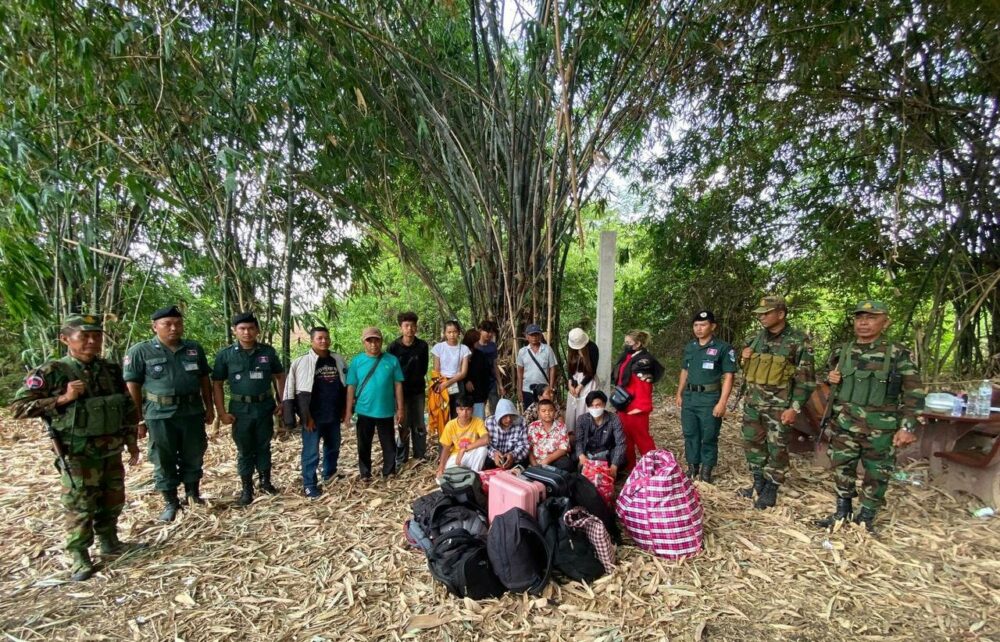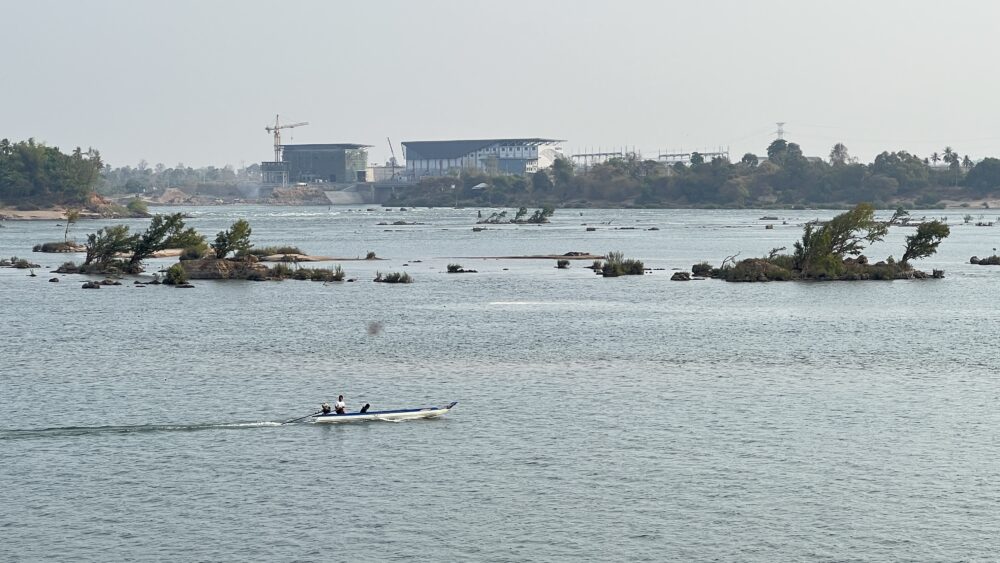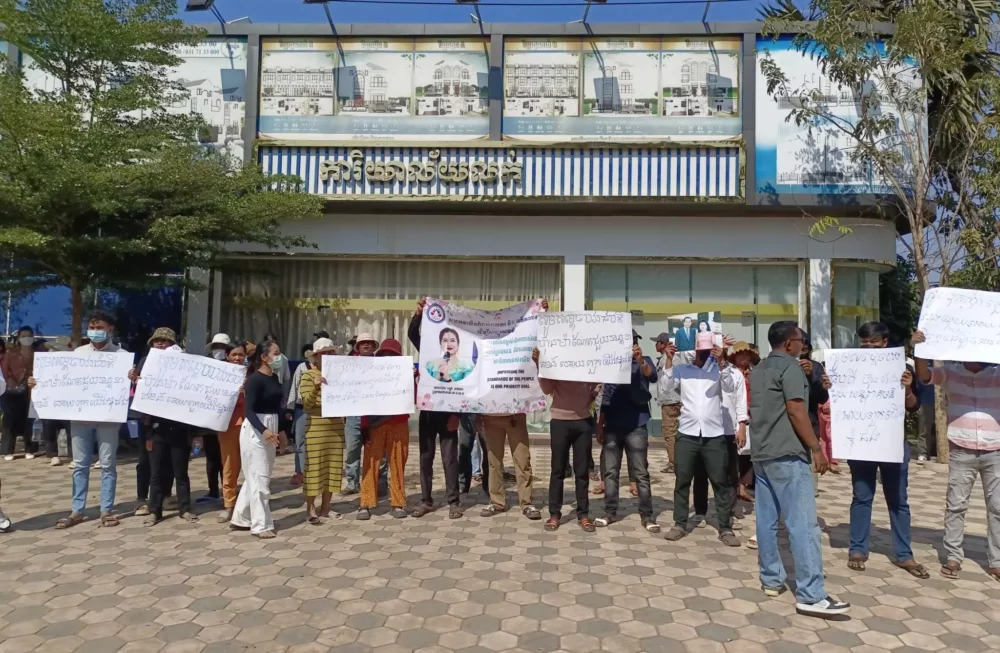It’s Cambodia’s favorite fermented delicacy, adding a kick of umami to many a classic Khmer dish, but this year the number of fish caught in the Tonle Sap has declined, with some blaming the construction of large hydropower dams along the Mekong River, as well as climate change, for the dearth.
Despite this, there’s also good news for consumers this season — prices are down.
“I come here every year to buy fish to make prahok and the price is much cheaper than last year,” Kim Sophal, 60, told CamboJA on the shores of the Tonle Sap River in Kandal province’s Ponhea Leu district, where locals had gathered waiting for boats to bring in the catch.
Sophal said she bought 100 kilograms of fish for just $50, half of what she paid last year. However, she worries that with the decline in the number of fish caught each year, there might not be enough to make prahok in the future.
“I understand that illegal fishing and the destruction of flooded forest along the river has reduced the number of fish in the water,” she said.
 Customers buy fish to make Prahok in Kandal province, December 14, 2021. CamboJA/ Pring Samrang
Customers buy fish to make Prahok in Kandal province, December 14, 2021. CamboJA/ Pring Samrang Customers buy fish to make Prahok in Kandal province, December 14, 2021. CamboJA/ Pring Samrang
Customers buy fish to make Prahok in Kandal province, December 14, 2021. CamboJA/ Pring Samrang Customers buy fish to make Prahok in Kandal province, December 14, 2021. CamboJA/ Pring Samrang
Customers buy fish to make Prahok in Kandal province, December 14, 2021. CamboJA/ Pring Samrang
Ram Mony, a 36-year-old farmer from Kampong Speu province, noted that the fish seem smaller compared to last year. Aside from the size, Mony says another reason why the staple is cheaper this year — despite there being less of it — could be the fact that not many people are buying yet.
“It may go up as more people come,” he said.
This is echoed by Seng Long, who oversees the operation of licensed fishermen called “dai.” He told CamboJA that the price is cheaper because the fish caught are so small. Long hopes that the second phase of the catch, which comes in January, will see the price go up because larger fish will be available for sale.
However, he acknowledged that “during eight years in the business, I have noted that the number of fish has continued to decline because of low level of water. This is due to the hydro dam causing low water flow into the Tonle Sap Lake.”
 Vendors sell fish to make Prahok in Kandal province, December 14, 2021. CamboJA/ Pring Samrang
Vendors sell fish to make Prahok in Kandal province, December 14, 2021. CamboJA/ Pring Samrang Vendors sell fish to make Prahok in Kandal province, December 14, 2021. CamboJA/ Pring Samrang
Vendors sell fish to make Prahok in Kandal province, December 14, 2021. CamboJA/ Pring Samrang
According to Long, fishermen can currently catch about 15 tons of fish a day, compared to 20 tons last year.
The fish bought directly from dai operators sells for between 1,000 to 1,500 riel per kilogram, while brokers resell it for between 2,000 to 2,500 riels.
Om Savath, executive director at the Fisheries Action Coalition Team, said the decline in recent years is due to a combination of several factors including climate change, hydro dam projects along the Mekong River, and the fact that “illegal fishing remains high.”
Cambodia’s prahok season starts in November, runs until February, and relies on the success of the monsoon and the reversal of water flows into the Tonle Sap. The Lake expands and contracts with the seasons, with water flowing in from the Mekong — via the Tonle Sap River — at the start of rainy season and out at its end. Lower water levels in the Mekong due to dams mean the Tonle Sap River reversal has been occurring much later in recent years.



